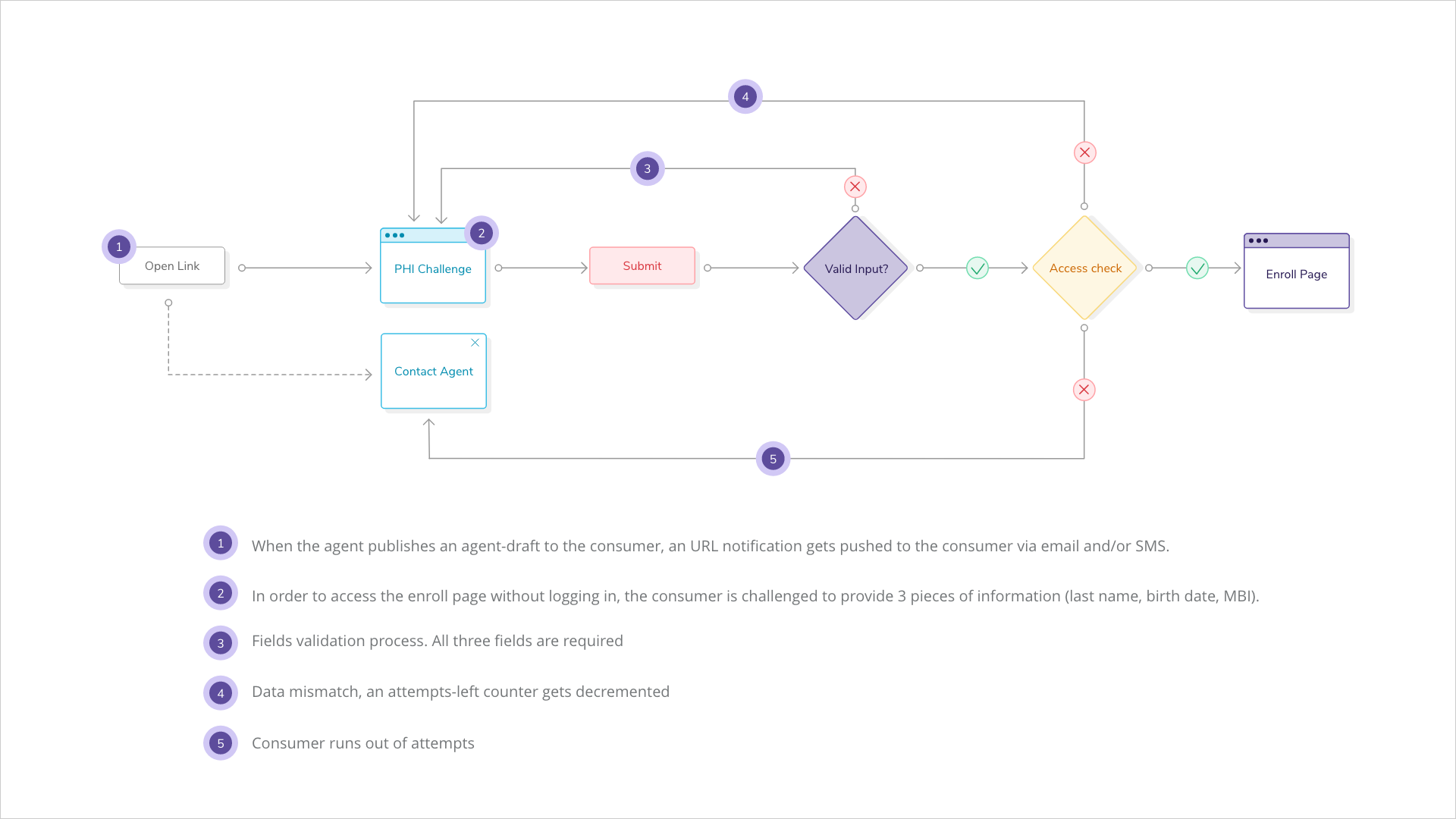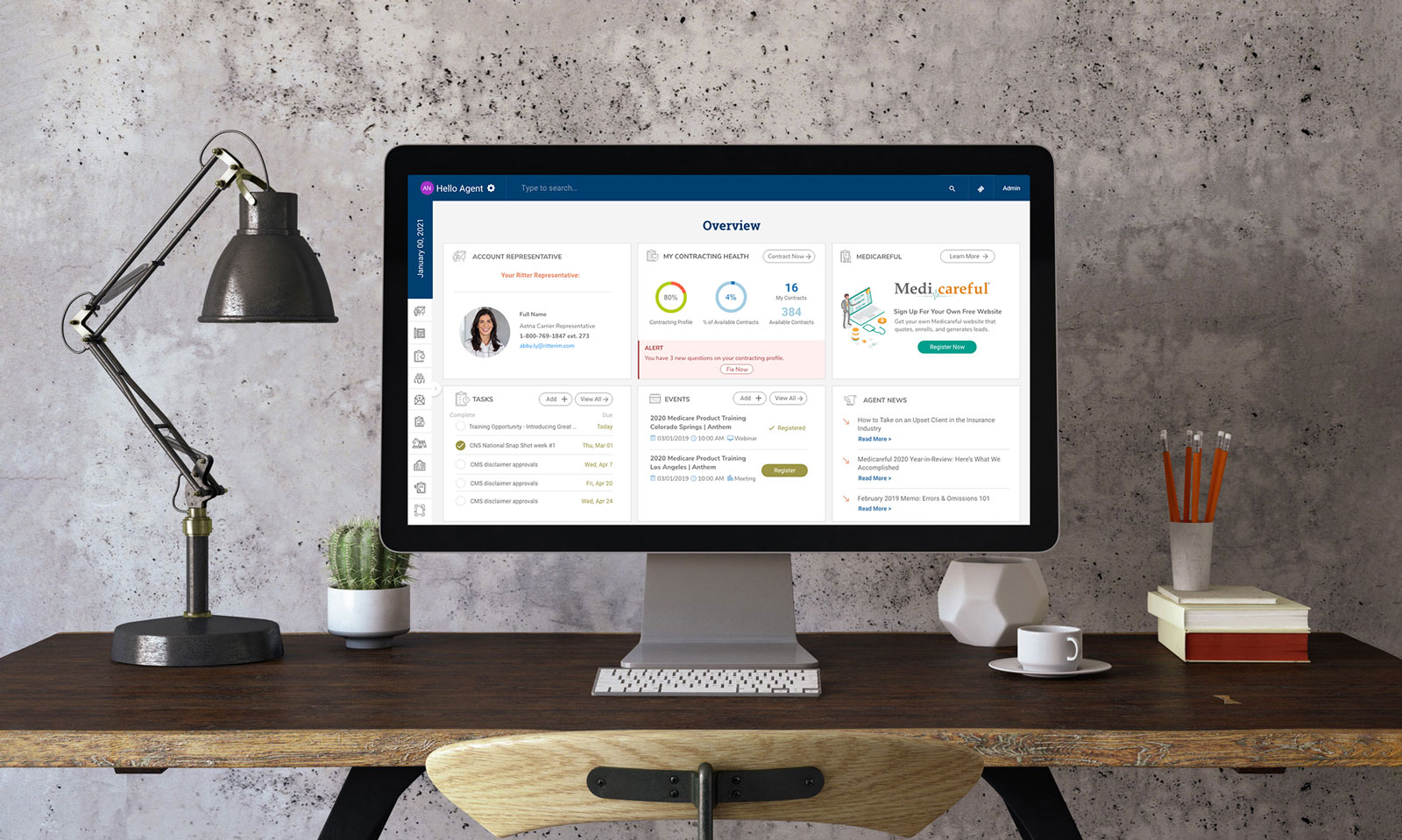Role: UX/UI Designer (Design Lead)
Team: Ritter Frontend Development Team
Goal: Create an intuitive, self-service digital platform enabling insurance agents to efficiently manage their business independently
Date: 2018-2022
Objective
Originally, Ritter’s platform required extensive staff assistance, limiting agents’ independence and efficiency. My objective was to design a streamlined, intuitive dashboard enabling agents to directly manage client data, enrollments, contracts, commissions, downlines, and essential business operations.
Approach & Deliverables
When I transitioned from the marketing to the software department, the Platform lacked a coherent design system, leading to inconsistent and confusing user experiences. My primary task was to establish a comprehensive design system, followed by designing an intuitive, end-to-end user experience specifically tailored for agents.
Product Design Process
Leveraging my experience, I developed a structured Product Design Process (PDP) to enhance collaboration and streamline our planning. To ensure alignment, I presented our PDP approach to the entire team, emphasizing its practical benefits and workflow enhancements.
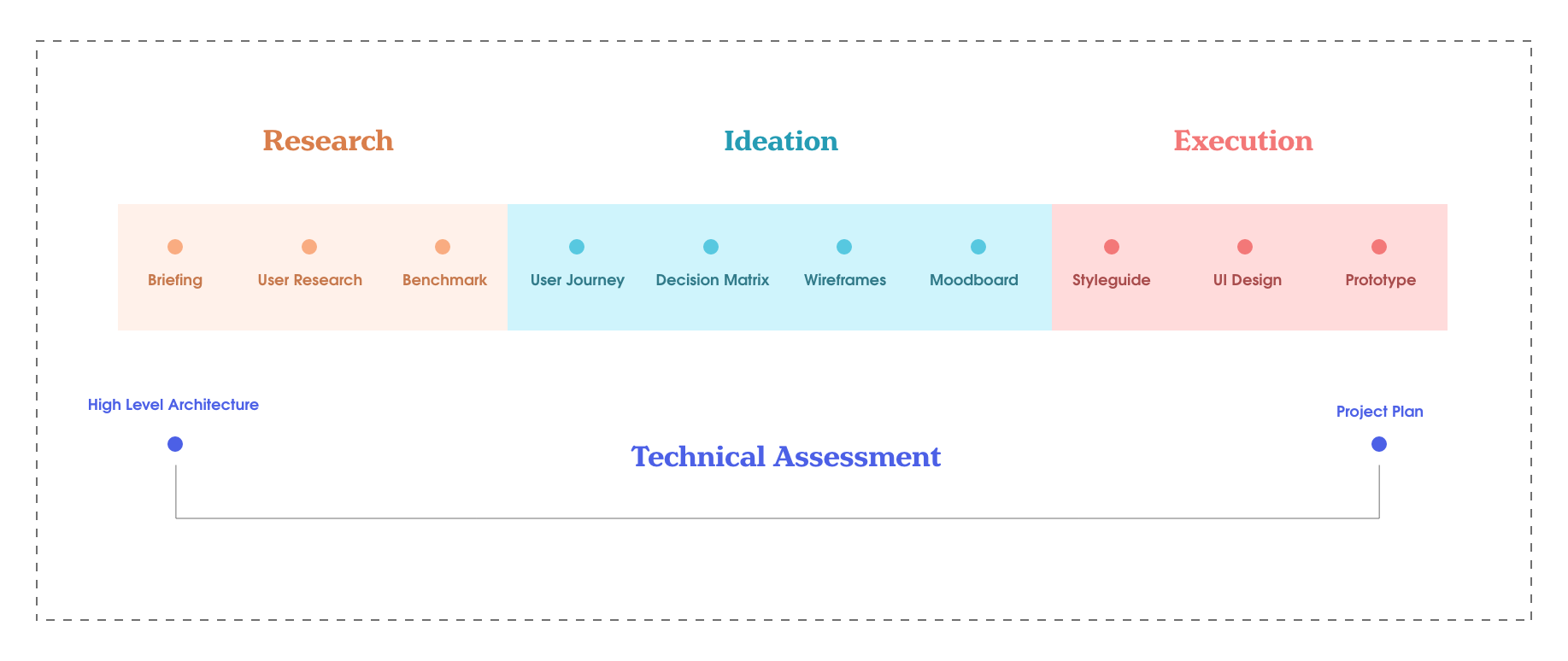
My PDP was divided into four key phases:
1. Research
- Briefing: Defining vision, goals, and business requirements
- User Research: Identifying target users (Personas) and understanding motivations and goals
- Benchmarking: Analyzing competitors and prevalent design patterns
2. Ideation
- User Journey: Mapping user experiences, scenarios, and workflows
- Decision Matrix: Prioritizing user stories and aligning user and product goals
- Wireframes: Structuring page layouts and navigation flows
- Moodboard:,/strong> Establishing visual and thematic direction
3. Execution
- Style Guide: Ensuring consistent and cohesive interface styling
- UI Design: Combining wireframes and style guide into polished designs
- Prototype: Developing interactive click-through prototypes for feedback
4. Technical Assessment
- High-Level Architecture: Designing technical architecture and identifying dependencies
- Project Plan: Setting milestones and ensuring clear project understanding
Research
Context Study
Research began by outlining the tasks agents commonly required assistance with from Ritter’s staff. This involved interviews and consultations with multiple departments, including Licensing, Contracting, Commissions, Call Center, New Business, and Marketing.
Additionally, we interviewed 17 agents to understand their daily workflows, challenges, and aspirations for the new system.
User Pain Points
We identified several core issues that the platform needed to resolve:
- Difficulty organizing and managing client information (agents relied heavily on Excel)
- Complicated client enrollment process
- Lack of transparency regarding submission status within hierarchies
- Absence of custom quoting tools
- Limited on-demand commission reports
- Challenges in managing tasks and notes
- Complex processes for event registration
- Difficulty accessing carrier “First Look” documents
- Time-consuming support processes
Problem Statement
Agents lacked an integrated, efficient digital space combining key functionalities from multiple applications to streamline daily business management.
Use Cases

Executive Summary
The Ritter Platform aims to provide a consolidated digital workspace enabling agents to efficiently manage and optimize their business workflows.
Ideation
Design Principles:
- Intuitive: Creating an instructional, clear, and simple interaction model.
- Stress-Free: Offering flexible user experiences that guide without dictating.
- Responsible: Empowering users with tools and insights that enhance confidence and professionalism.
Feature Narrative
We designed an intuitive digital space with clearly defined user interactions:
- Account Creation: Simple registration with an NPN (National Producer Number)
- Education: Quick introductory tour of features
- Overview: Dashboard providing vital business statistics, tasks, and status updates
- Start a Business: Easily add or import client lists
- Tasks: Manage daily activities with clear task management tools
- Events: Effortless event registration
- Document Submission: Streamlined online document uploads
- Support: Easy access to help resources
User Flows
Detailed user flows were developed to clearly illustrate user interactions and platform navigation.
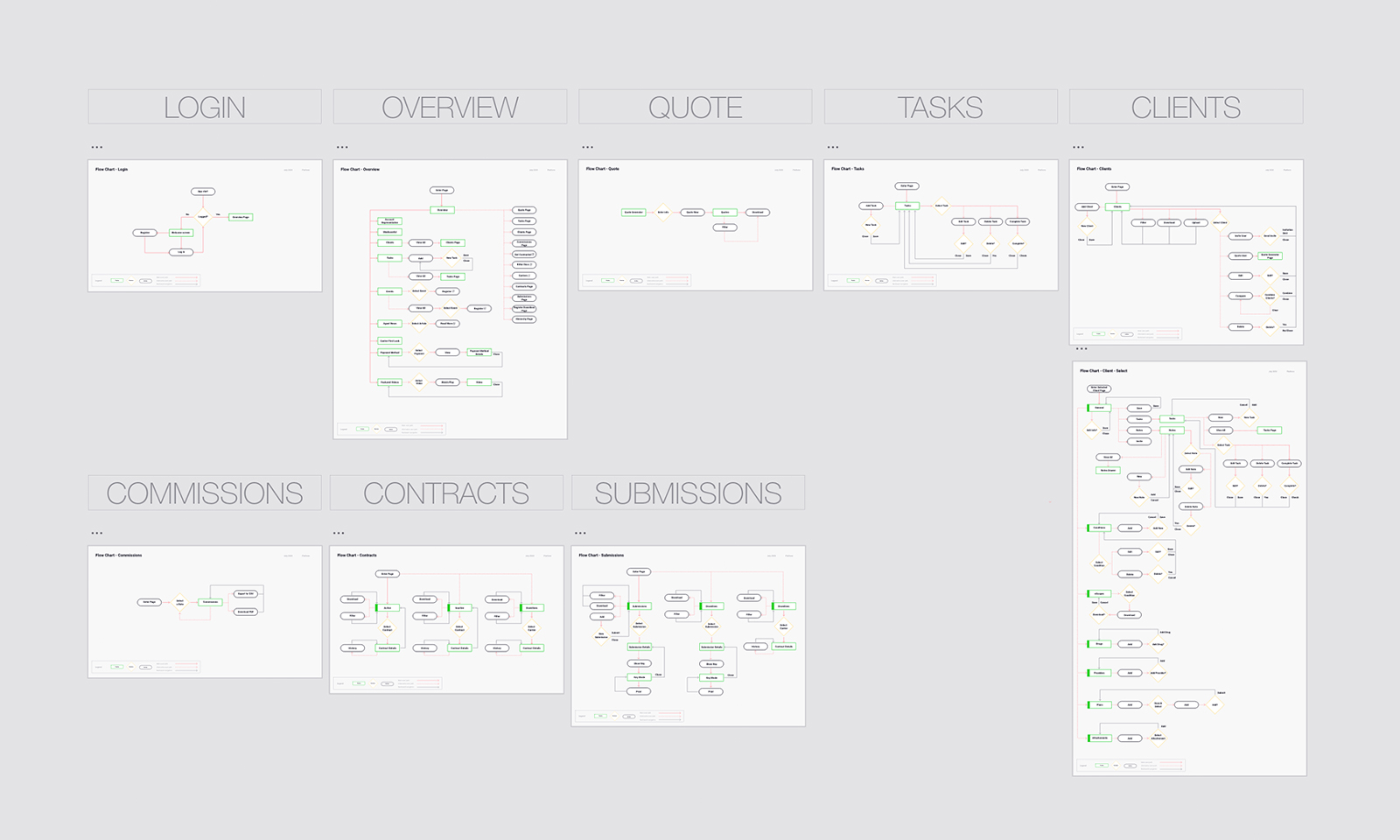
Execution
Style Guide
The style guide was created as part of a separate project to develop an open-source CSS framework. You can view the related case study HERE.
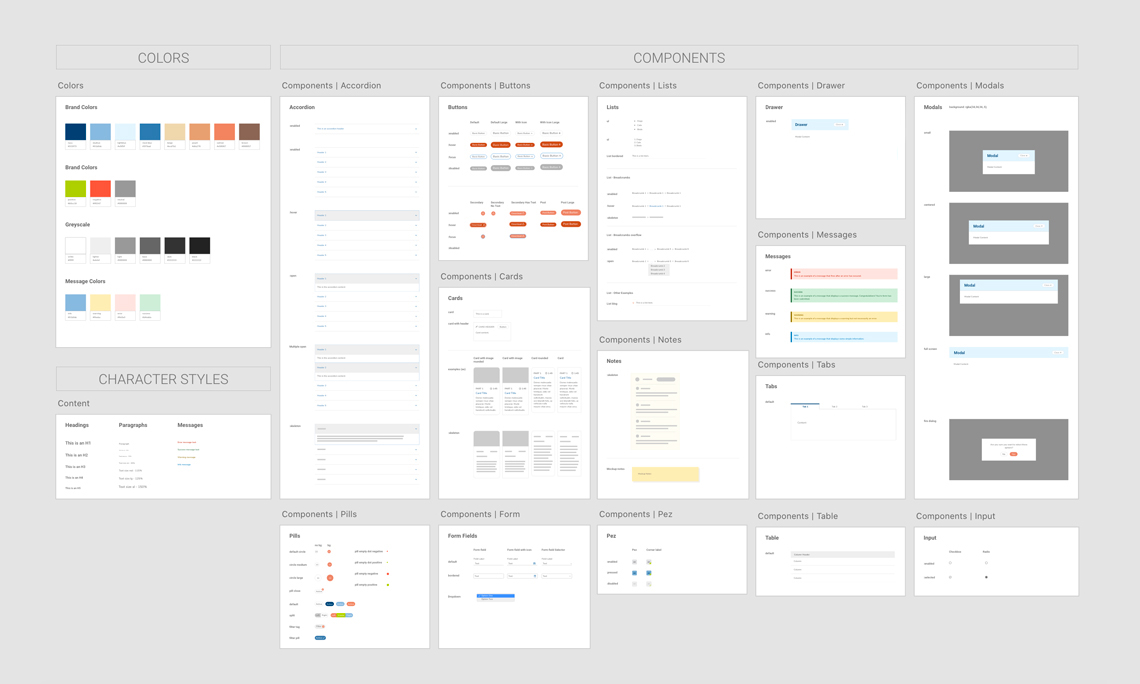
Prototype
I developed a shareable, interactive prototype to illustrate the product’s functionality and design clearly to stakeholders before implementation.
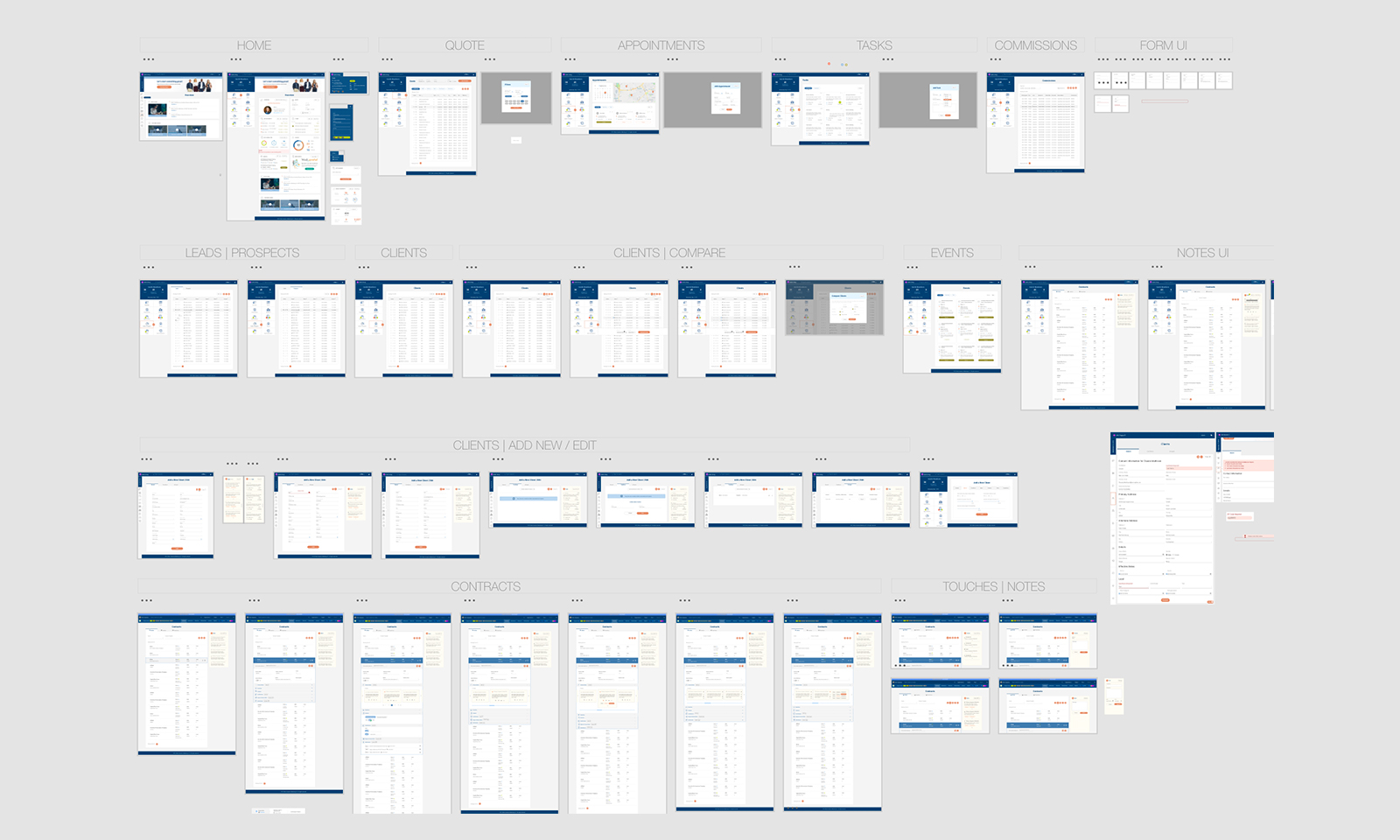
Handoff and Collaboration
Based on insights gathered during user testing sessions, we initiated development. I created detailed handoff documentation for engineers and collaborated closely to clarify functional details. This included annotated user flows and simple yet effective visual explanations to ensure smooth implementation.
